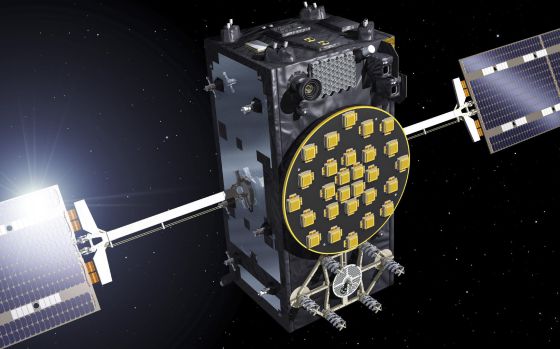
ESA image of a satellite of the Galileo program. / EFE
The European Space Agency (ESA, its acronym in English) today reported that the two Galileo satellites launched yesterday from French Guiana on a ship Soyuz have not reached the correct orbit. The fifth and sixth European satellite navigation system, are nevertheless controlled by the ESA, who is now studying the possible consequences of which have not found their proper position.
“The observations made after separation satellites of the [ship] Soyuz VS09 for the Galileo mission show a gap between the orbit achieved and that was planned, “Arianespace said in a statement maker Doresa and Milena , the two satellites diverted . “They were placed in a lower orbit than expected. The teams are studying the impact this may have on satellites, “adds. Arianespace has declined to confirm if the wrong path can be corrected, according to AFP. In any case, the ESA has also reported on another note that both satellites are safely controlled by its headquarters in Darmstadt, Germany, and there will be information about his condition “after preliminary analysis of the situation.”
Doresa and Milena left yesterday on the back of the Russian Soyuz Kourou base in French Guiana, at 9.27 (14.27 in Spain ). At three hours and 48 minutes, the ship was separated from the two satellites and leave them on a circular orbit 23,522 miles high.
The two satellites should form part of the European Galileo navigation network, the alternative to the American GPS old continent. After years of delay, the project, which runs the ESA for the EU, is now accelerating to reach the goal of a network of 26 satellites in orbit by 2017, plus six parts. With a weight of 714.3 and 715.3 kilos respectively, are the first two operational Galileo satellites device, which is in addition to four experimental orbited in 2011 and 2012.
European Commission (EC) has invested 13,000 million euros in the Galileo program (devised in 1998 but has since suffered delays and cost overruns), although part of that budget rests with the predecessor Egnoss, which entered service in 2009. Project Galileo system will work with the American GPS and Russian Glonass. When complete, it will allow for real-time positioning to within one meter.
No comments:
Post a Comment